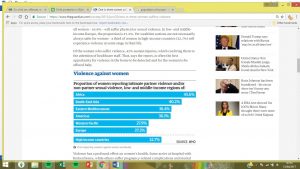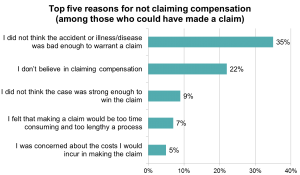Soaring property prices trigger record 14,000 challenges to wills in a year as a rise in divorces and remarriage leads to disputes between ‘modern families’
- The number of challenges rose from 11,735 in 2014 to 14,167 in 2015
- Many now tailor their wills to favour one child ahead of another
- Rising property prices give beneficiaries ‘a larger pot to fight over’
Available at: http://www.dailymail.co.uk/news/article-4392152/Record-14-000-wills-year-challenged-house-prices-rise.html#ixzz4djoVoNI1 By Chris Gysin For The Daily Mail Published: 23:34, 7 April 2017 | Updated: 01:35, 8 April 2017
CRITIQUE
The headline implies that the increase in property prices is responsible for challenges to wills and linked to an increase in divorce and remarriage. However, using their figures gives an increase of 2432 will challenges in one year – 14,167 subtract 11,735. Which equates to 202 per month. We do not know if these figures are over a full year, or just part of a year. The headline also implies that 14,000 is a whole new number for the year. There is no comparison between the increase in any other years. There is no mention of where the figures come from, no link to any report, no mention of what area they are targeting – who the population are or what age group.
Cause, correlation or coincidence? There is no evidence correlating the increase in property prices with the increase in will challenges – nowhere in the article does it even mention property prices. Therefore, it is likely to be a coincidence – property prices in certain areas generally do increase over time as do divorce rates and will challenges. Since we do not know the target area or have any in depth figures, we cannot make any correlations with the hypothesis thus can conclude that property prices do not cause will challenges or divorce as implied.
The article appears to be written from the perspective of two fairly high profile lawyers (based on viewing their websites), therefore it is biased as to their opinions and records. They would not be representative of the population as a whole. Overall, the article feels more like an advertising campaign, using fear, to try to persuade people in a divorce situation to use a respectable lawyer otherwise they are going to lose money or property. There is mention of children being favoured and/or missing out on what they are entitled to. Two high profile cases are mentioned – the Beatles and the magician, Paul Daniels, whilst these figures may be relevant for a few people, for the vast majority of the public, they are completely unrealistic and irrelevant.
A new headline could read:
“With an increase in will challenges and contest over property, lawyers urge families to use their services to avoid missing out on what is rightfully theirs.”


